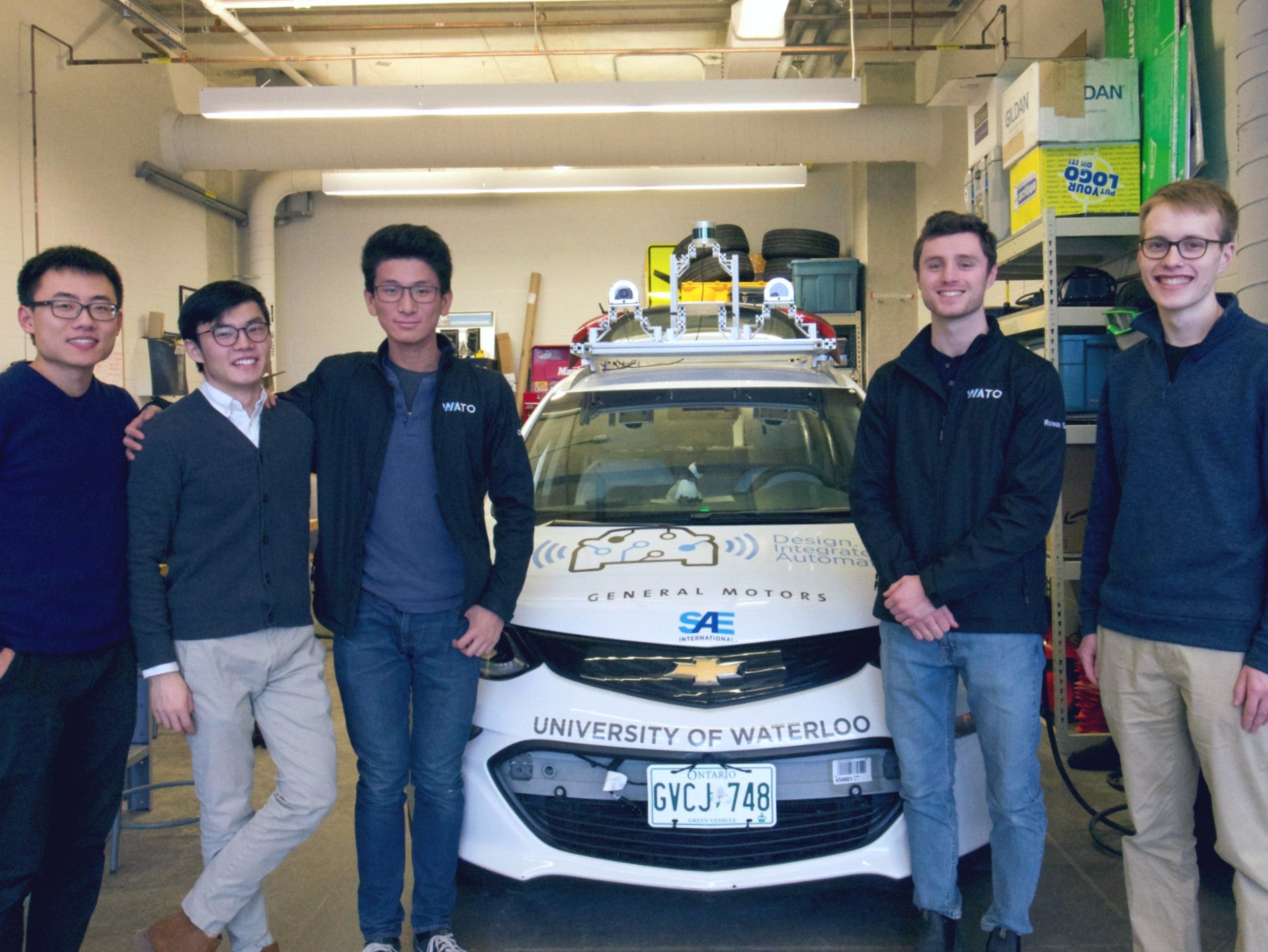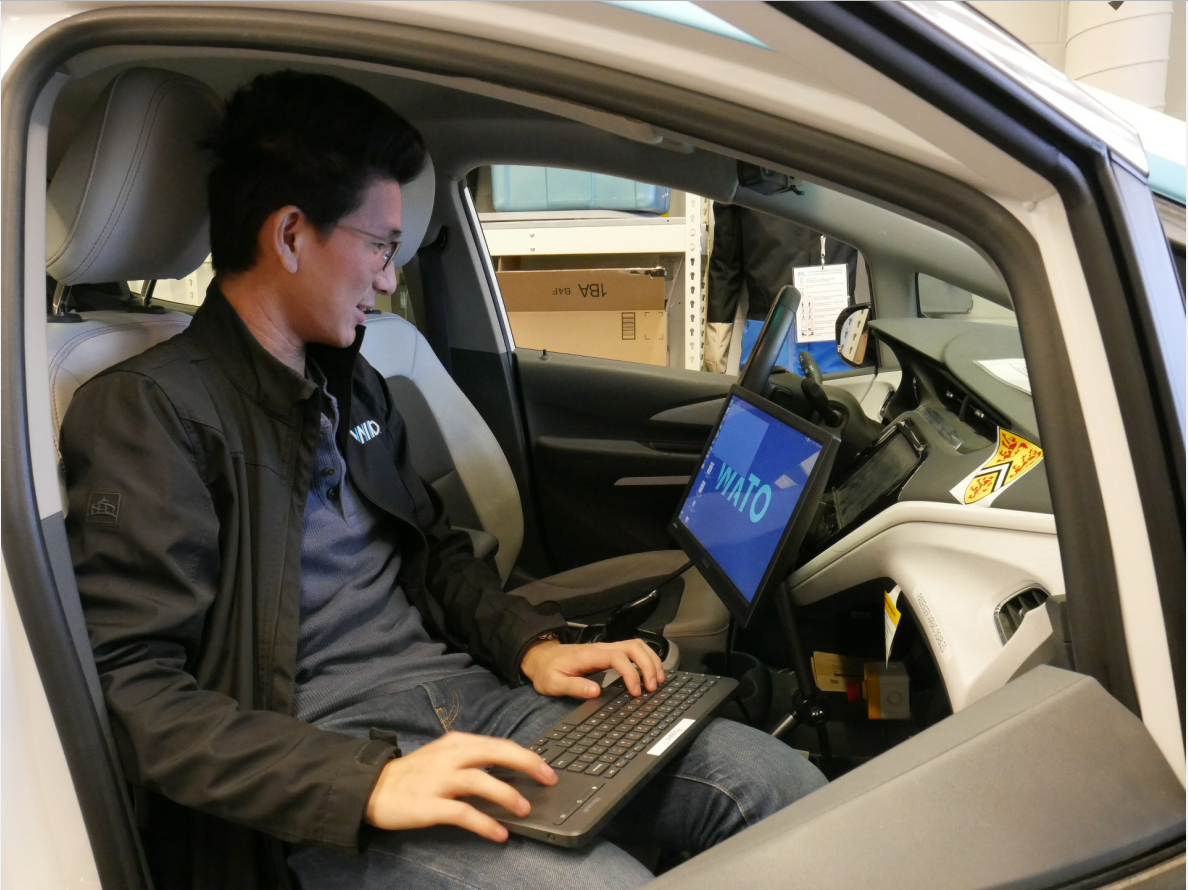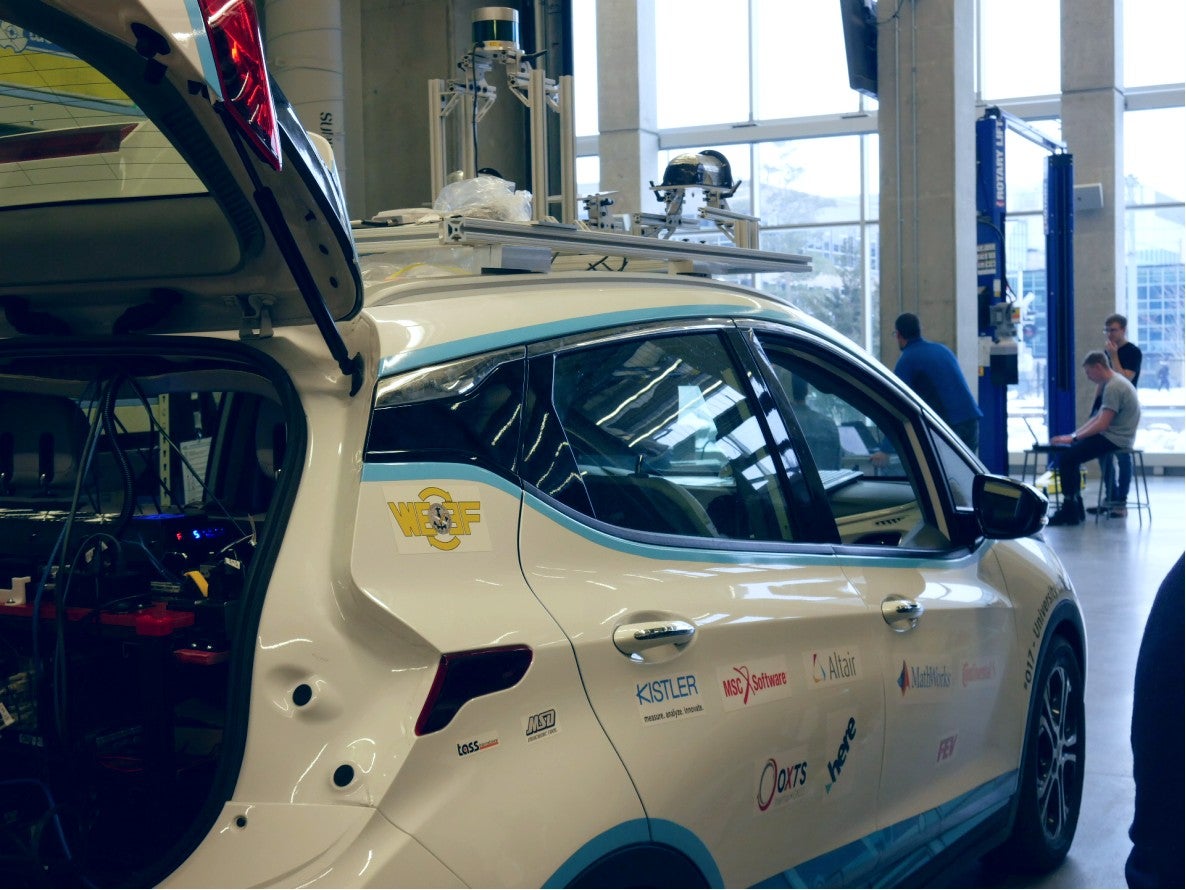The leaders of Waterloo’s student-run autonomous vehicle team have run into their fair share of roadblocks, but they’re not stopping now.

From left to right: Ben Zhang, Ray Li, Charles Zhang, Rowan Dempster, and John Phillips
For the first time ever, the University of Waterloo appeared on The Amazing Race Canada as two competitors took a ride around campus in a self-driving Chevrolet Bolt. The leaders of WATonomous, the University’s student-run design team for autonomous vehicles, looked on with pride at their creation.
Back in 2017, WATonomous joined the SAE Auto Drive Challenge to develop a fully autonomous vehicle within a three-year timeframe. Now, as the competition extends another year, WATonomous is revving its engine for the next test of strength.
Overcoming Obstacles
There’s a certain glamour to appearing on television and hobnobbing with industry leaders from companies like Tesla, General Motors, and Uber, but behind the scenes, the path to success is strewn with roadblocks and hazards. Rowan Dempster, a fourth-year Computer Science student who serves as the co-captain of WATonomous, has witnessed the journey from the beginning. “We placed in the middle of the pack in the first year of the competition, but the second year was marked by failure caused by transitions in technical and leadership staff,” he shares. Though one of Waterloo’s greatest strengths, its co-op culture has produced a revolving door of students that makes consistency difficult to achieve for the WATonomous team. Confronted by the challenge of coordinating a shifting staff of 50 to 100 students at a time, the team rarely made it to the test track during its second year of operations.

During their third year, Dempster and his team members implemented a more effective chain of command and put a defined work plan in place. Each member of WATonomous invests eight to ten hours a week or more, with work sessions throughout the week depending on their division. They gather for all-team meetings twice a month and hit the test track on alternate weeks. While they only have up to six months of ideal testing conditions given the length of winter, they take advantage of every opportunity to test out their product.
Reaping the Benefits
Despite the hurdles they face, the leaders of WATonomous point to the many benefits the experience provides. “It’s been great to draw knowledge from such an interdisciplinary team,”’ says Ben Zhang, a Computer Science student. The hundreds of students who have worked for WATonomous contribute skills from a broad range of disciplines. From the team’s inception, the Faculty of Math has always provided a reliable contingent. “My math classes have given me a very foundational knowledge for many of the things I address at WATonomous,” says Zhang. “I’m currently working on smoothing out a trajectory to avoid obstacles, which wouldn’t be possible without prior knowledge from my coursework.”
For John Phillips, another team leader from the Faculty of Math, WATonomous presents a rare opportunity to create something new.
“It’s very much like working at a startup,” he reflects. “You get to experience the entire life span of a problem and change your approach when something isn’t working.”
Through networking with some of the group’s sponsors, John has already secured several interviews for future positions. “The experience, the technical knowledge, and the opportunity to work with industry-standard tools has made me more qualified,” he affirms.
Dempster recognizes the unique value of pursuing a high-risk endeavor in a low-risk environment. “If we did any of this with our own personal capital and time, we would run a high risk of going bankrupt. “With the support of our sponsors, we can experiment and fail.” With funding from the Mathematics Endowment Fund and other university funds to outside sponsors like General Motors, WATonomous is fully fueled for the foreseeable future.
Moving Forward
As the next phase of the SAE Auto Drive challenge approaches, the WATonomous team faces a formidable challenge. “It’s all about removing the human component from the control of the car, since the metrics are based on the frequency of that involvement,” Dempster explains. Currently, the team’s vehicle can drive itself in specific scenarios. To reach the next level, WATonomous must reduce the possibility of human intervention by removing the steering wheel altogether. “We also want the car to be able to drive from point A to point B while accounting for traffic lights, stop signs, pedestrians, cyclists, and construction,” adds Charles Zhang, a Computer Science student who also leads the team. “We’re making great progress right now.”

While WATonomous spent the first years of competition training students and building an effective management structure, its leaders are currently investing their energies in optimizing the vehicle that will hit the test track this summer. “We have pivoted from being an educator to being a competitor,” says Dempster. “Education is still a primary goal of this competition, but winning is nice too.”
To apply to join the team, visit Watonomous.ca/apply.